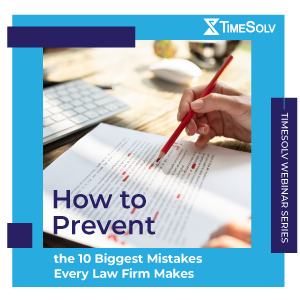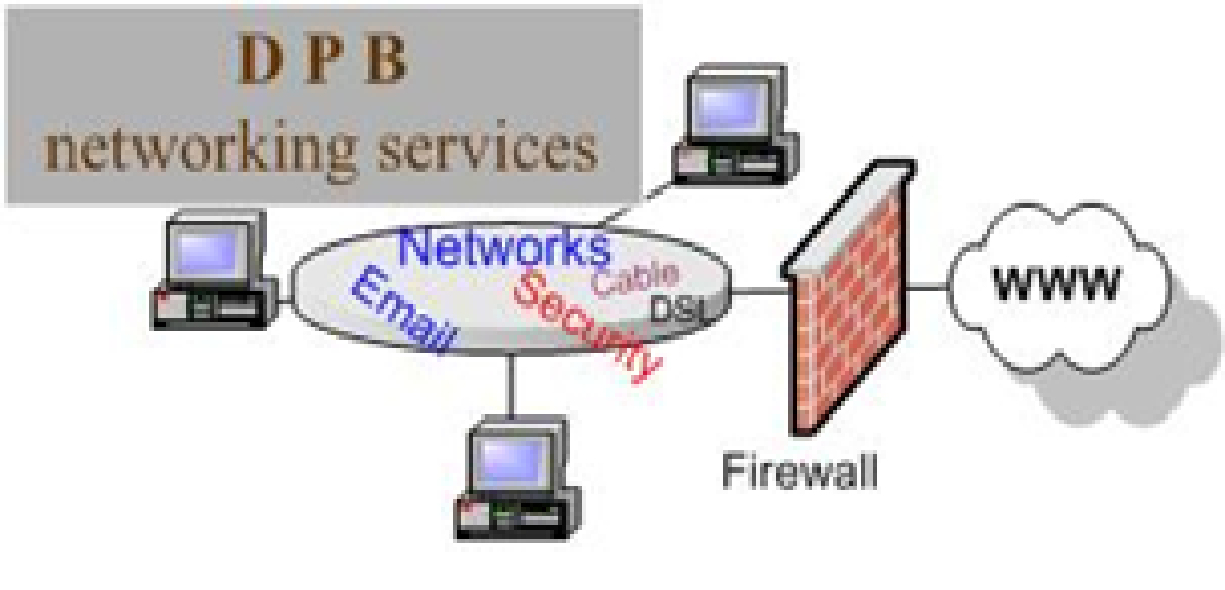It’s official: we’ve made it halfway through 2023. And while there’s not a big mid-year party to commemorate this time of year, it’s a good opportunity to evaluate an important question: are you on track to meet your law firm’s business goals?
Many law firms grapple with challenges that can significantly impact their profitability and productivity—many of which stem from the same common mistakes that many law firms make.
The year’s midpoint is a good time to take a closer look at your law firm’s processes. Consider some of these common mistakes (along with practical tips for what to do instead).
Avoid these common mid-year mistakes at your law firm
Confidently navigate the second half of the year and set your firm up for continued success by heading off these challenges before they create end-of-year issues for your law firm.
Mistake #1: Neglecting mid-year financial review
The middle of the year is a crucial time for law firms to take a step back and assess their financial health. This involves reviewing the revenue and profit generated in the first half of the year, comparing these figures with the firm’s initial projections, and identifying any discrepancies.
But many law firms often neglect this mid-year financial review due to the pressures of ongoing cases and client demands. This neglect can lead to a lack of understanding of the firm’s current financial position, resulting in misguided financial decisions.
The consequences of neglecting a mid-year financial review can be severe. For example, without a clear understanding of your firm’s financial health, it can be easy to confuse revenue with profit. This confusion can give a false sense of security, leading to risky financial decisions that can jeopardize the firm’s profitability.
What to do instead
To stay on track, law firms should analyze their financial data, including revenue, expenses, and profit, and compare these figures with the firm’s initial projections for the year. Comprehensive financial reporting tools can assist in this process, providing clear, easy-to-understand reports that can help firms better understand their financial health.
Mistake #2: Overcomplicating collections
Collections are a critical aspect of any law firm’s operations, ensuring that the firm receives the payments it’s owed. However, the collections process can often become complicated, especially if there are outstanding payments from the first half of the year.
Many law firms make the mistake of overcomplicating their collections process mid-year. This could involve using outdated or inefficient systems for tracking payments or failing to follow up promptly on overdue invoices.
The result is a collections process that’s not only time-consuming and frustrating for the firm, but also confusing and inconvenient for clients. This can result in delinquent payments, high accounts receivable (AR), and a sluggish cash flow. It can also strain the firm’s relationships with its clients, who may become frustrated with the difficult payment process.
What to do instead
Law firms should aim to streamline their collections process mid-year to avoid these issues.
This could involve implementing a system like TimeSolv, which automates invoicing and includes online client payment links. This simplification can improve financial health and free up time and resources for valuable billable tasks.
How to Prevent the 10 Biggest Mistakes Every Law Firm Makes
Are you looking for a simple way to boost your law firm’s productivity and increase client satisfaction? Stop committing these 10 common mistakes! watch the webinar now.
Mistake #3: Inadequate time-tracking
Time is one of the most valuable resources in a law firm. However, as the year progresses, it’s easy for time-tracking practices to become lax. But whether due to the pressure of work, lack of efficient time-tracking tools, or simply the habit of not recording time promptly and accurately, the implications of inadequate time tracking can be significant.
Under-reporting time can lead to underbilling, directly impacting the firm’s revenue. Meanwhile, if employees work more hours than they’re recording, it can lead to overwork and burnout, affecting productivity and morale in the long run.
What to do instead
To make sure that they’re fully accounting for their hours, law firms should reassess their time-tracking strategies mid-year. Implementing a reliable time-tracking tool offers an easy and efficient way for attorneys to record their time, even when on the go, ensuring accurate billing and enhancing profitability.
Mistake #4: Ignoring mid-year expense reporting
Expense reporting is a critical aspect of a law firm’s financial management. While it’s a year-round concern, a mid-year review of expenses is essential to ensure a firm is on track with its budget (and identify any necessary adjustments for the remainder of the year).
Despite the importance of a thorough mid-year expense report, some law firms overlook the task. This can be due to various reasons, such as being preoccupied with casework or simply underestimating the impact of expenses on the firm’s profitability.
Ignoring mid-year expense reporting can lead to budget overruns and financial strain. Without a clear understanding of where the firm’s money is going, it’s easy to overspend in certain areas or fail to allocate enough resources to others. This can create financial inefficiencies and even threaten the firm’s financial stability.
What to do instead
Law firms should prioritize a comprehensive mid-year review of expenses to avoid this mistake. This involves analyzing all costs incurred in the first half of the year and identifying any areas of overspending.
To avoid further issues, make sure you’re using expense-tracking software like TimeSolv alongside your time-tracking tools. That way, nothing slips through the cracks.
Mistake #5: Not adjusting goals and strategies mid-year
Some law firms make the mistake of sticking rigidly to their initial goals and strategies, even when mid-year performance data and changing circumstances suggest that adjustments are needed. This can be due to a variety of reasons, such as resistance to change, lack of time for reassessment, or simply not recognizing the need for adjustment.
Failing to adjust goals and strategies mid-year can lead to a variety of problems. The firm may end up pursuing goals that are no longer relevant or feasible or using systems that are no longer effective. This can result in wasted resources, missed opportunities, and reduced profitability.
What to do instead
Law firms should conduct a thorough mid-year review of their goals and strategies to avoid this mistake. This involves analyzing performance data from the first half of the year and determining whether the firm’s goals and strategies are still effective.
A robust financial dashboard can assist in this process, providing valuable insights into project performance that can inform strategic adjustments.
Stay on track for a successful year with TimeSolv
By being proactive and taking steps to avoid these common mid-year mistakes, you can ensure that your firm remains on track for a successful year.
Maximize your firm’s potential and make the most of the year’s remaining months. With TimeSolv, you can streamline your operations, enhance client satisfaction, and work towards achieving zero AR.
Our comprehensive platform offers solutions for invoicing, expense tracking, time tracking, project management, and reporting, providing the tools you need for success. Ready to experience the difference? Start your free trial today!
The Ultimate Guide to Automating Your Legal Billing and Payments
To stay competitive in today’s legal landscape, law firms must embrace the power of technology, especially when it comes to billing and payments.
The best way to improve your law firm’s cash flow while also increasing client convenience is 'Automation'.
Download our free guide to improve your legal billing and payment process today!


















